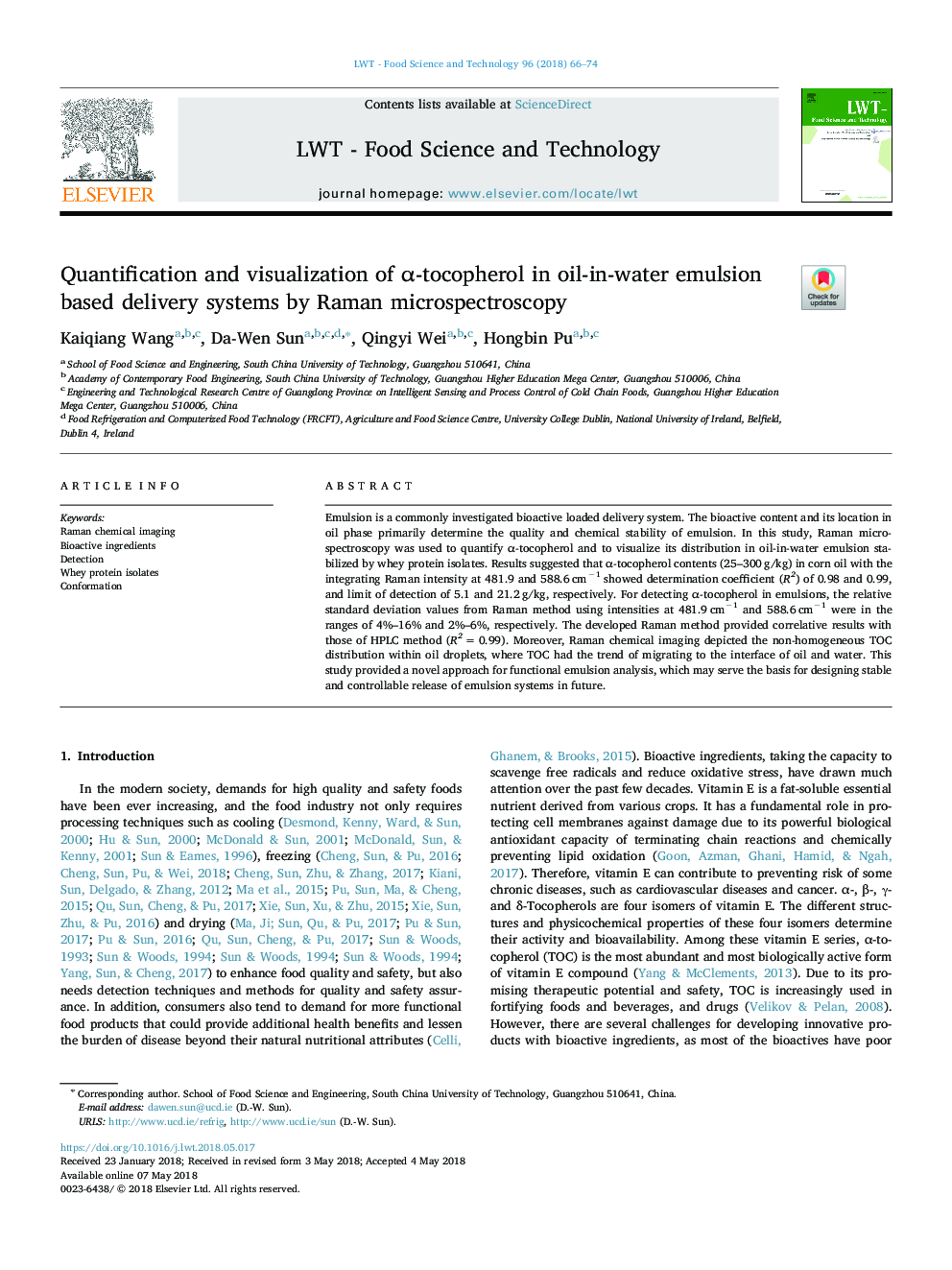| Article ID | Journal | Published Year | Pages | File Type |
|---|---|---|---|---|
| 8890342 | LWT - Food Science and Technology | 2018 | 9 Pages |
Abstract
Emulsion is a commonly investigated bioactive loaded delivery system. The bioactive content and its location in oil phase primarily determine the quality and chemical stability of emulsion. In this study, Raman microspectroscopy was used to quantify α-tocopherol and to visualize its distribution in oil-in-water emulsion stabilized by whey protein isolates. Results suggested that α-tocopherol contents (25-300â¯g/kg) in corn oil with the integrating Raman intensity at 481.9 and 588.6â¯cmâ1 showed determination coefficient (R2) of 0.98 and 0.99, and limit of detection of 5.1 and 21.2â¯g/kg, respectively. For detecting α-tocopherol in emulsions, the relative standard deviation values from Raman method using intensities at 481.9â¯cmâ1 and 588.6â¯cmâ1 were in the ranges of 4%-16% and 2%-6%, respectively. The developed Raman method provided correlative results with those of HPLC method (R2â¯=â¯0.99). Moreover, Raman chemical imaging depicted the non-homogeneous TOC distribution within oil droplets, where TOC had the trend of migrating to the interface of oil and water. This study provided a novel approach for functional emulsion analysis, which may serve the basis for designing stable and controllable release of emulsion systems in future.
Related Topics
Life Sciences
Agricultural and Biological Sciences
Food Science
Authors
Kaiqiang Wang, Da-Wen Sun, Qingyi Wei, Hongbin Pu,
